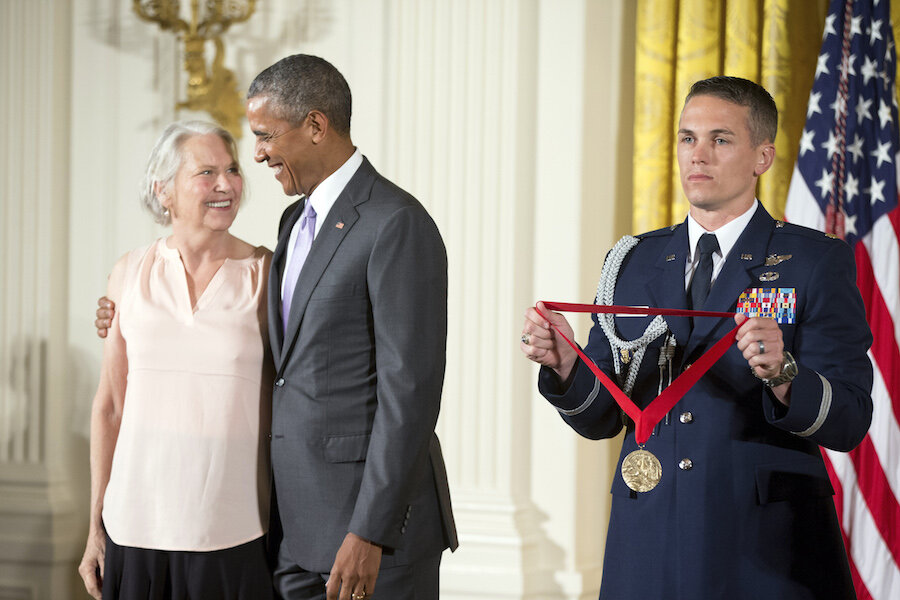Annie Dillard: Which 5 books by this National Humanities Medal winner are must-reads?
Earlier this month, during a White House ceremony, President Barack Obama gave a National Humanities Medal to Annie Dillard, giving national attention to an author who usually keeps a pretty low profile. Dillard gives few interviews, and at age 70, she’s given up her previous regimen of two public readings a year. The teacher in me says, "The way to learn about a writer is to read the text. Or texts," Dillard, a former university professor tells visitors to her website, anniedillard.com.
Dillard’s texts are various, but here’s a thumbnail tour of her five best books:
1) “Pilgrim at Tinker Creek.” Dillard got a Pulitzer Prize in 1975 – and national fame as an emerging literary talent – with this nonfiction narrative of walks in woods, fields, and along waterways in her home turf of Roanoke, Virginia. Admirers compared it favorably to Thoreau’s “Walden,” and it broke ground as the work of a woman nature writer in a genre dominated by men. The prose her is sublime – sometimes mystical, sometimes mystifying, but never dull.
2) “Teaching a Stone to Talk.” A first glance, this 1982 title looks like an assortment of casual essays, but Dillard professes another aim. The book “is not a collection of occasional pieces, such as a writer brings out to supplement his real work; instead, this is my real work, such as it is.” Here, nature unfolds as an often beautiful but frequently dark affair. In an essay called “Living Like Weasels,” Dillard meets her title character on a walk, finding him not only engaging, but ruthless.
3) “An American Childhood.” In this 1987 memoir of her earliest days in Pittsburgh, Dillard offers a pitch-perfect portrait of the 1950s and her eccentric but loveable parents. Not since the poems of Elizabeth Bishop has a writer so deftly captured the magical strangeness of being a child.
4) “Encounters With Chinese Writers.” In this often overlooked 1984 book, Dillard chronicles her connections with Chinese writers that she visited – or who visited her – as part of cultural exchanges launched in the early 1980s. Decades later, Dillard’s wry reportage still offers insights into the culture of a country that’s become dramatically more influential on the world stage.
5) “The Maytrees.” Dillard’s 2007 novel tells the story of Toby Maytree and Lou Bigelow, who fall in love after World War II and live among the bohemian artists and writers of Cape Cod. “The Maytrees were young long ago,” Dillard writes. “They lived on what still seems antiquity’s surface. It was the tip of Cape Cod, that exposed and mineral sandspit.” Prose like that makes the novel a pleasure from start to finish.
Danny Heitman, a columnist for The Baton Rouge Advocate, is the author of “A Summer of Birds: John James Audubon at Oakley House.”






